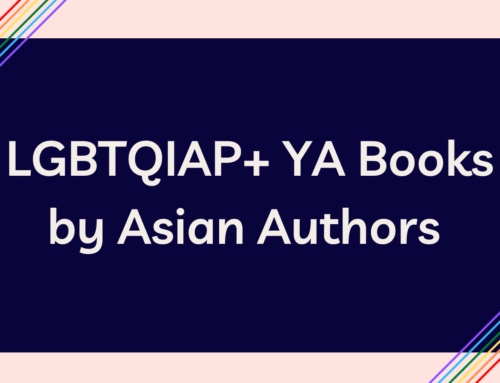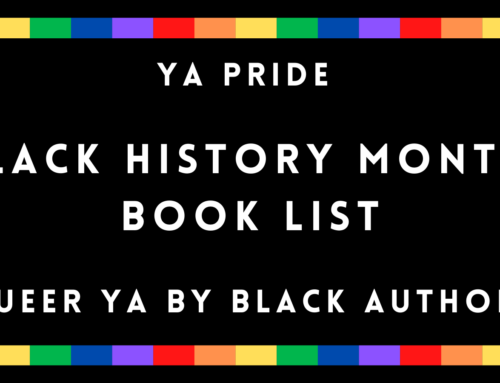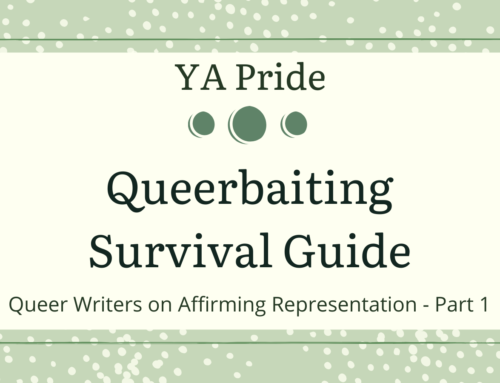Welcome to our new series, Gay YA Agent Spotlight! Every Thursday, we’ll be interviewing one agent about upcoming trends in LGBTQIA+ YA and MG, what they currently represent, and what they’re looking for.
1. Hello! Thank you for participating in our Agent Spotlight series! We’re excited to have you. Can you tell us how you got started agenting?
Mine’s a bit of an unusual story. I had completed my freshman year at NYU and already blown through all the money I had saved for college (NYC is EXPENSIVE), so I needed a job stat. I sent out 40 resumes, and Stacey Glick was the first person to call me back. I didn’t know what a literary agent was, but I knew I liked to read, so it seemed worth a shot. I had the part time position within two days and began working at DGLM in 1999. In 2000, I quit because I couldn’t have a job and be an RA for the first semester. Then I came back. Then I thought I should get a job in “my field,” as I was studying Urban Design. So I went to work for the City Parks Foundation. That…didn’t delight me. So I came back. And then I quit again before my senior year for a reason I honestly can’t remember at this point. And…I came back. Each time I had quit, I continued to work with the agency as a freelance reader, and of the first three books I recommended, two sold for six-figures (I still fondly remember the third and wish I knew what happened to it). I fiiiiiiiinally started thinking that maybe there was something to this publishing thing as a career, but there were no jobs at DGLM at the time. As I suffered through some terrible interviews in various fields, I started to panic. Then someone quit the agency, and I jumped on the job. Miriam Goderich told me, “You know if you work here full time, you can never quit again, right?” I never did. So here I am. 17 years later!
2. We’re a site highlighting LGBTQIA+ YA (and increasingly, and excitingly, middle grade!). Can you tell us a recent LGBTQIA+ book you read and enjoyed?
I adore Tim Federle’s Better Nate than Ever series. I’m a theater geek at heart, and Tim’s books appealed to me on a gut level. It’s also just a joyous series which tickles me. And I’m delighted that it’s middle grade. What a wonderful space to see this kind of story in!
3. Do you currently represent any LGBTQIA+ YA or MG? Anything should we be putting on our radars?
I do! From Robin Talley’s just released AS I DESCENDED (a retelling of Macbeth at a boarding school—with lesbians!) to Rory Harrison’s upcoming LOOKING FOR GROUP (a trans girl and gay boy on a road trip to the Salton Sea) to Saundra Mitchell’s upcoming ALL OUT (an anthology of stories about LGBTQIA+ teens through history) down through new books I’ve signed on and am getting ready to sell like Tehlor Kinney’s BETWEEN THE SHADOW AND THE SOUL (a queer Latinx fantasy set in a world where powerful men are assigned two wives). That’s a small handful of what’s just out or just coming up. There are more in the past, and there will be more in the future.
4. Why do you think it’s important for LGBTQIA+ youth to be represented in their literature?
I think kids need to felt seen and heard. I still remember a coworker at my first job (Seattle’s Coffee in Mamaroneck, NY!) who handed me a copy of Armistead Maupin’s Tales of the City and said, “I think you should read this.” I wasn’t out, but she knew. And she helped. Immensely. She didn’t tell me why I should read it. She made it feel so safe. “It’s this awesome book about a bunch of friends in San Francisco.” But she saw me, and she knew what I needed, and that meant the world to me. Later on, while working at the National Book Foundation, I found a copy of Alex Sanchez’s RAINBOW BOYS which blew. My. Mind. A book for teens about three gay boys who were more or less happy? It was extraordinary. And I will never feel anything less than a pure and tremendous affection to both Maupin and Sanchez (who is now contributing to an anthology I sold!). They helped me find myself. So did so many other authors, but they were the first who spoke to me on that level. Working in children’s books, I know that so many other kids still haven’t had that moment, that they still feel unseen and unheard and on their own. But I look at books like Alex Gino’s GEORGE or I.W. Gregorio’s NONE OF THE ABOVE or the books of Malinda Lo or Laini Taylor or Francesca Lia Block, and my heart warms so much. I know how far we have to go as a publishing community, but that doesn’t stop me from also being profoundly grateful for how far we’ve come.
5. What trends in LGBTQIA+ YA are you seeing? What would you love to see in your inbox? And, if you’re open to queries, how can someone query you? (Email or a website link to your agency website is fine!)
I’m seeing a trend away from “issues” novels and towards the inclusion of characters across the spectrum in romance and fantasy and thrillers and sci-fi, and that is so, so heartening. And listen, I always have time for serious literary fiction that delves deep, but I’m excited to be getting to a space where that’s not ALL we can see. LGBTQIA+ kids also deserve escapism. And fun. And adventure. Let the trend continue! I’m always open to new queries, and my guidelines are available at www.dystel.com. I’m pretty flexible on what I’m looking for, but I’m super down for some intersectionality, all kinds of OwnVoices, and any perspectives that I haven’t seen before. And I’m always looking at the make-up of my own list so I know that I have better coverage of LBT than GQIA+, which could be worth noting. And my list is more white than I would hope, so I’d love to rep a broader array of voices.
Thanks, Jim!




